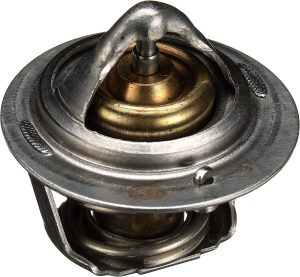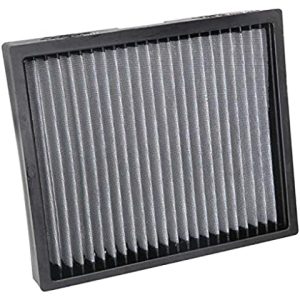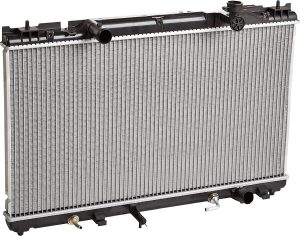Let’s face it- being stuck in a car with no heat on the coldest days is enough to ruin any mood. And if you’re asking yourself why is my heat blowing cold air in my car, it could be due to several reasons. In this blog post, we’ll explore all the possible reasons behind your heater not doing its job and how you can diagnose these issues yourself! After reading through, you will better understand what causes cold air from your car’s heating system so that you never need to to suffer again. So read on and find out exactly why is my heat blowing cold air in my car!
Table of Contents
ToggleReasons why your heater in car blowing cold air
With many possible reasons behind this issue, the good news is that it can be identified and resolved swiftly. Let us explore why your car heater could be releasing cold air and what steps you can take to rectify the situation.
Blocked Heater Core
The heater core works by transferring heat from the engine cooling system into the passenger compartment. It’s usually located behind the dashboard and resembles a small radiator.
Your car’s heating system is conveniently connected to two water hoses that extend from the engine to the firewall and two air ducts that feed warm air into the cabin when you increase your vehicle’s heat settings.
As time passes, the inside of a heater core can become packed with debris and grime, which hinders its passage. If this occurs, chances are you’ll observe a substantial decrease in temperature within your car; regardless of how high the thermostat is set, warm air won’t blow out as it should because no warmth can reach it!
Thermostat Malfunction
The thermostat is an absolute must for maintaining your car’s peak performance and reliability. Located beneath the hood, this small device intelligently monitors and regulates the engine coolant temperature for optimal performance. When temperatures drop too low, it opens a valve that permits warm liquid to flow from the motor into the radiator; consequently heating up air which then blows out through heater vents into your vehicle interior.
When a thermostat malfunctions, it loses the power to manage how much coolant moves throughout your system. Despite having hot air coming out of your vents, there may be too little coolant going through the heating core to keep you warm for an extended period. As a result, all that’s emitted is lukewarm or even cold air instead of heated air from your ducts.
Clogged Cabin Filter
A cabin filter is a component inside your car that filters the air before it enters the cabin through the HVAC system. This filter is a must-have in protecting your vehicle from dirt, pollen, and other things that may cause allergies. Unfortunately, the filters become clogged over time when they accumulate particles which stops them from working properly.
When your cabin filter becomes clogged with dirt and debris, it restricts airflow through the HVAC system. This means there isn’t enough air passing through the heater core, which helps warm up the air that comes out of your vents. Without enough airflow, you won’t get any hot air out of your vents—just cold!
Low Coolant Levels
Guarantee a smooth-running engine by blending antifreeze and water to prevent your vehicle from becoming excessively hot. When the temperature falls too swiftly, this cleverly designed combination effectively absorbs heat and stops freezing. Doing so guarantees that your vehicle is constantly equipped with a reliable cooling system.
When your vehicle’s coolant levels dip too low, it cannot absorb the heat generated by the engine sufficiently. This can lead to overheating, which could result in costly and extensive damage. Moreover, a lack of coolant will cause your heater to blow cold air since its role is to keep you warm inside the car cabin.
Also Read: Can You Put Oil In A Hot Engine
Defective Blower Motor
Your car’s blower motor is responsible for pushing cool, refreshing air into the cabin. It typically sits in the engine bay and is made up of an electric motor that runs a fan that pulls outside air inside and blows it through your vents. Most vehicles will only have one-speed setting on their blower motor, but some more advanced models possess multiple speeds to let you choose how aggressive or subtle with airflow you’d like to be. This switch can usually be found somewhere within the cabin and provides settings such as “off,” “low,” “medium,” or even “high.”
If the blower motor has been subject to wear, tear, or burnout, it won’t be able to generate enough airflow to keep your heater core heated. Thus, if something appears off with the blower motor, you must investigate further. Without sufficient airflow, your car will only blow cold air no matter how high you turn up the thermostat setting in your vehicle.
Damaged water pump
Your vehicle’s water pump is the essential component that facilitates the circulation of coolant from your engine to your radiator. If your system has experienced harm, such as leakage or broken seal, it will not be able to circulate the necessary amount of coolant and keep an optimal temperature.
Without proper cooling fluid flow throughout the heater core, no matter how much time you spend waiting for hot air – cold air will continuously spew out from your vents.
Radiator Problem
Most people think that the radiator in their car is there just to keep the engine cool. However, the radiator also plays an essential role in the heater’s operation. The radiator is responsible for circulating coolant through the machine. The coolant absorbs heat from the engine and transfers it to the air flowing through the radiator. This process keeps the engine from overheating.
When you switch on the heater, a valve opens and directs hot coolant to travel through a heating coil in your car’s dashboard. The heat from this coil warms up the air passing over it before circulating into your vehicle’s interior.
Issues with the radiator can interfere with the proper functioning of the heater, too – for example, if there is an unresolved leak in it that decreases its coolant level. Not enough hot liquid will be available to adequately heat everything up, resulting in only cold air being pushed out.
Another problem is if the radiator is not properly circulating coolant. This can cause an accumulation of hot coolant in the engine, which can lead to overheating. If this happens, you will be able to use your heater once you fix the problem with your radiator.
How to Resolve the Issue?
When your car is suddenly producing lukewarm air, the initial action should be to inspect the engine’s coolant level. If it appears low, add a combination of antifreeze and water for replenishment. To ensure no other contributing factors lead to an imbalance in coolant levels, servicing of the cooling system is necessary.
Additionally, it is critical to make sure the blower motor functions properly and all settings are accurate. To test this, switch on your heater and adjust it to high speed; then listen for any strange noises coming from the engine bay. Should there be issues with the blower motor, a replacement may be necessary.
If the thermostat of your car has gone awry, it can cause the heater to emit cold air. In such a scenario, you must replace it swiftly in order to enjoy optimal warmth and comfort once more.
Finally, if the radiator or water pump starts to cause you concern, it is time for a diagnostic test. An experienced technician can check these parts and make sure that everything is running smoothly.
By adhering to these steps, you can identify the cause of why your car is blowing cold air and find a resolution tailored to your specific case. If you continue to experience problems with your heating system, it’s best to take your car in for a professional inspection as soon as possible.
Also Read: How Long Does it Take for a Car to Cool Down
Frequently Asked Questions
How Much Does Car Heater Blowing Cold Air Cost to Fix?
The cost to fix why your heater is blowing cold air in your car can vary depending on the cause of the issue. If it’s just a minor problem with the blower motor or thermostat, you can repair it yourself for around $50 – $100. However, more severe issues, such as a radiator leak or water pump malfunction, could cost hundreds of dollars to repair.
How can I prevent my car’s heater core from going rancid?
To protect your vehicle’s heater core from failing, regularly confirm that the cooling system is stocked with coolant and has no leaks. Additionally, try not to drive at high speeds for extended durations, as this can stress the radiator and potentially result in a leak or malfunction. Moreover, be sure to take note of any out-of-the-ordinary sounds coming from the engine bay and make sure you’re getting regular car servicing done.
What are some signs that my car’s heater core is going rancid?
If your car’s heater is malfunctioning, you may begin to notice less heat emerging from the vents or even a strange smell emanating from within. You could also observe steam or smoke rising from underneath the hood. Don’t delay – you must get your vehicle checked by a professional right away if any of these symptoms show up!
Is this a common problem?
To extend the life of your car’s heater core, it is essential to maintain a sufficient coolant level and ensure there are no leaks. Additionally, it would help if you restrained from running the engine at high speeds for extended periods in order to reduce stress on all components associated with the cooling system. Lastly, always listen out for any strange noises coming from under the hood, and don’t forget about regular checkups done by an experienced technician – these will be vital to sustaining peak performance!
Conclusion
With numerous potential explanations for why your vehicle is blowing cold air, it’s critical to determine the underlying cause in order to prevent further harm. Checking the coolant levels, blower motor, thermostat, radiator, and water pump can help you determine why your heat is not working correctly. If you’re still having issues after taking these steps, it’s best to take your car in for a professional inspection. Taking the necessary precautions and regularly servicing your vehicle can help you avoid this problem in the future.










